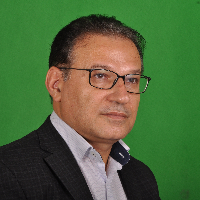Identifying and Prioritizing the Social and Physical Criteria of Heterogeneous Neighborhood Based on the Perception of Neighbors (Case Study: Hassan Abad-Zargandeh Neighborhood)
The growth and expansion of early residential nuclei have led to the formation of heterogeneous neighborhoods consisting of context with a minimum standard of construction for low-income residents and a new quality context with more affluent residents. As a result, they have residents with different socio-economic and even cultural backgrounds living together over time. The formation of these complexes in different parts of Tehran has caused social, psychological, and physical problems in the residential environment, ultimately affecting the residents’ quality of life. On the other hand, in recent decades, “diversity” has found a special place in urban planning. Some views suggest that diversity is an essential component of equitable urban development. Variety can take many forms (racial, income, physical, functional, etc.). There are at least a few heterogeneous neighborhoods in each city. Variety in residential neighborhoods, which are heterogeneous in terms of socio-economic class, can lead to different judgments between different groups. In heterogeneous neighborhoods, the external perception of the adjacent residential environment leads to misjudgments, which may lead to interaction or, conversely, to separate groups from each other. Thus, creating a healthy environment in a heterogeneous context has become a significant and serious issue. According to numerous studies in the field of heterogeneous neighborhoods, external judgments are based on objective and subjective factors of texture. So far, the identification and prioritization factors of housing and residential environment quality during the perception and judgment of outsiders in such neighborhoods have not been addressed. Therefore, it is necessary to investigate the factors influencing the external judgment of an adjacent neighborhood and the effect of the socio-economic class of individuals on the prioritization of these perceived factors in a heterogeneous context. According to the mentioned issue, this research aims to identify and prioritize the physical and social factors of the heterogeneous neighborhood by the perception of the residents.
This study uses an applied research design. This article uses a survey method to measure the social and physical factors influencing the judgment of outsiders about their adjacent neighborhoods. The study area is Hassanabad-Zargandeh neighborhood, where two old and new contexts are located next to each other, providing accommodation for different classes of people. In this community, two groups of 250 people with different socio-economic class were selected in a poorly developed civilian and non-randomly affluent texture. 500 questionnaires were distributed among the study population to extract the funds and characteristics of housing quality and the residential environment from documentary and library studies and in the survey. Then, using the factor analysis method and the help of SPSS 24 software, the factors affecting external judgment in a heterogeneous context were discovered and prioritized. With this analysis, the views of different groups of residents and their evaluation methods on the objective and subjective characteristics of the neighborhood were obtained.
According to the research findings, the residents’ priorities in their judgments are different from the housing and residential environment of the adjacent neighborhood. Accordingly, when perceiving and judging the adjacent housing and residential environment, the higher socio-economic status group pays attention to the factors of passway, open and private green space, facade, combination of uses, security, material, and details. The lower socio-economic status group pays attention to the security, façade, perceptual density, spatial quality, passway, access to facilities, and socio-cultural factor in their judgments.
In the perception of a complex, higher socio-economic status group prioritizes physical factors over non-physical ones and pays more attention to them. It can be said that objective factors are more important for this group than subjective factors. Therefore, it is necessary to improve the diversity, architecture, and physical housing of the lower socio-economic status group to reduce the negative judgment of the affluent residents. Because in heterogeneous neighborhoods, paying attention to the attitude and tendency of the upper class to coexist with the lower class is more decisive. According to the visual and social disruptions, the different social classes, the place of residence, and ignoring how housing factors and residential environment are valued can cause negative labeling between a group (especially the affluent group to the lower class group), leading to tension and disintegration of a heterogeneous society. It is necessary to pay attention to these perceptual priorities in the planning and policy-making of heterogeneous urban contexts in order to make the coexistence of groups possible.
- حق عضویت دریافتی صرف حمایت از نشریات عضو و نگهداری، تکمیل و توسعه مگیران میشود.
- پرداخت حق اشتراک و دانلود مقالات اجازه بازنشر آن در سایر رسانههای چاپی و دیجیتال را به کاربر نمیدهد.


